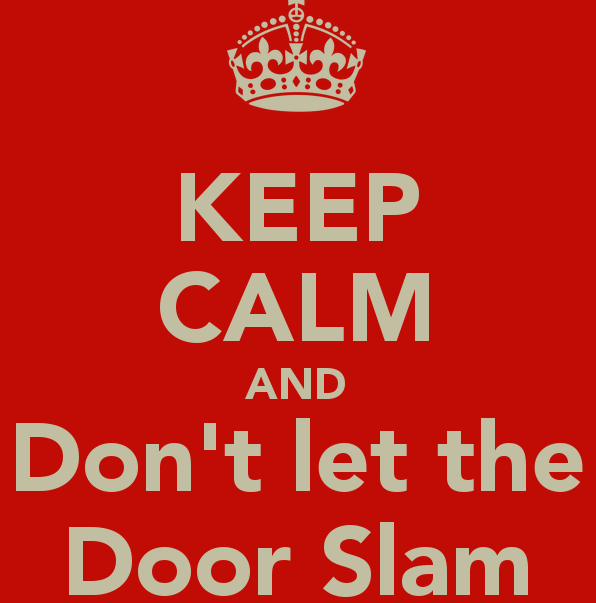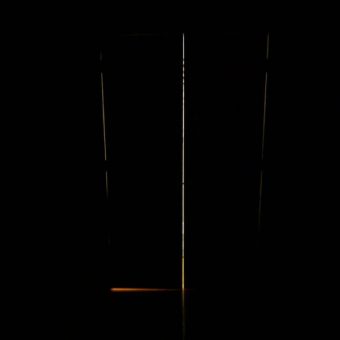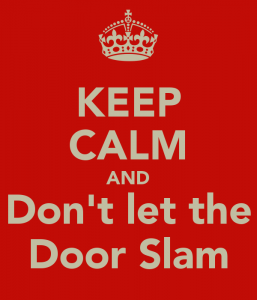No products in the cart.
How to Soundproof a Door

18
Dec
The first noise you hear when someone enters your home is usually from the door slamming behind them. That is the alarm that someone is home, but what if that frightening noise never happened. What if there was silence that was followed by silence? Keep reading to learn how you can soundproof a door in your home.
Top 4 Ways We Suggest to Soundproof a Door
Previous suggestions for making your doors quieter include putting rubber bands around the door knobs both inside and outside. This approach, although a simple fix, is not effective and neither is the quality of the rubber bands as they tend to snap early and often.
First, determine what your primary door noise issue is. Is the door making noise when it slams, or squeaking on the hinge? Is conversation audible on one side of the door from the other?
Why is it Important to Block Sound Passing Through Doors?
In most cases, the sound passing into a room, especially bedrooms and offices, is coming through and around the door. It is often what we call the “path of least resistance”. Why spend money upgrading walls and adding acoustic panels and other products, when you’d be much better off improving the door?
This is most obvious in home studios, where musicians and artists spend thousands of dollars on custom, high-end doors with advanced gaskets, often requiring professional installation. While this certainly NOT required for most applications, it’s insightful to see that those with the most knowledge treat doors before walls, and so should you.
1 – Fixing Sound Passing Around a Door
Some older houses have rather large gaps that leave an undesired airflow underneath their doors. In some cases, this airflow can even lead to a howl or a whistle which can get very annoying. Adding a Door Sweep or a Door Seal can help greatly in reducing outside noise, airflow, and noise caused by the airflow.
A Door Sweep is designed to create a tight fit around any door and also canceling out any airflow that may be flowing through the underside of it. This will reduce the noise flowing under the door. To determine if the sound is flowing under the door or not, use a paper test – if you can slide a piece of paper cleanly under the door, then sound can easily pass through that space.
Although very similar to the door seal, the Door Seal reduces any form of noise transfer through a tight fit against the threshold of the door rather than underneath it, like the door seal. It comes in various sizes to fit any door and will fit on any door regardless of age.
2 – Soundproof the Door Itself
Ultimately, if you fix the flanking path going around the door, then the sound is traveling through the door panel itself. In apartments and many multi-family communities, doors are often hollow-core, meaning that they only have thin door veneers on each side of an empty shell. The low mass of this door allows more sound to pass through compared to a solid-core door.
A more soundproof door could be filled with insulation or you could invest in a solid-core door. Solid-core doors weigh (and cost) significantly more than hollow core doors do, but soundproofing is an investment and you’ll benefit from it for a long time.
If your door is already installed, then consider Soundproofing you Door with a soundproof blanket. It is a soundproofing door panel that hangs over doors and seals around the perimeter of the door to prevent flanking. The heavy core, made of mass loaded vinyl, blocks sound transfer between rooms.

By turning off the light, you can see if there is sound leaking around your door. If light can get through, then so can sound.
3 – Quiet a Slamming Door
One very effective way of silencing your door is to add felt pads to the inside of the door frame. When the door is shut, instead of your wood door shutting on a wood frame, it shuts on the felt pads, which provides padding to dampen the sound. This, in turn, provides you with a very quiet door.
4 – Fixing Door Squeaks
Squeaky door hinges require a simple fix. You can purchase WD40 from your local home improvement store and give the hinges a quick spray. If that still doesn’t work, then you can always remove the pins from the hinges and put some lithium grease lubricant on them.
How to Soundproof a Door
It’s so critical to soundproof the door prior to spending money on other soundproofing and acoustical projects. If it’s hollow-core, consider upgrading to a solid-core or STC-rated door (although it might be quite expensive). Look at options to cover the door with sound blankets, or simply add a door seal and sweep to prevent flanking around the threshold. By treating your door, you’ll address the path of least resistance into the room, and see immediate benefits to the noise level in your room.
Summary

Article Name
Top 4 Ways to Soundproof a Door
Description
Learn several effective ways to soundproof a door in your apartment or home, from fixing the door threshold to soundproofing the door panel.
Author
Vince Pertad
Publisher Name
Residential Acoustics
Publisher Logo

